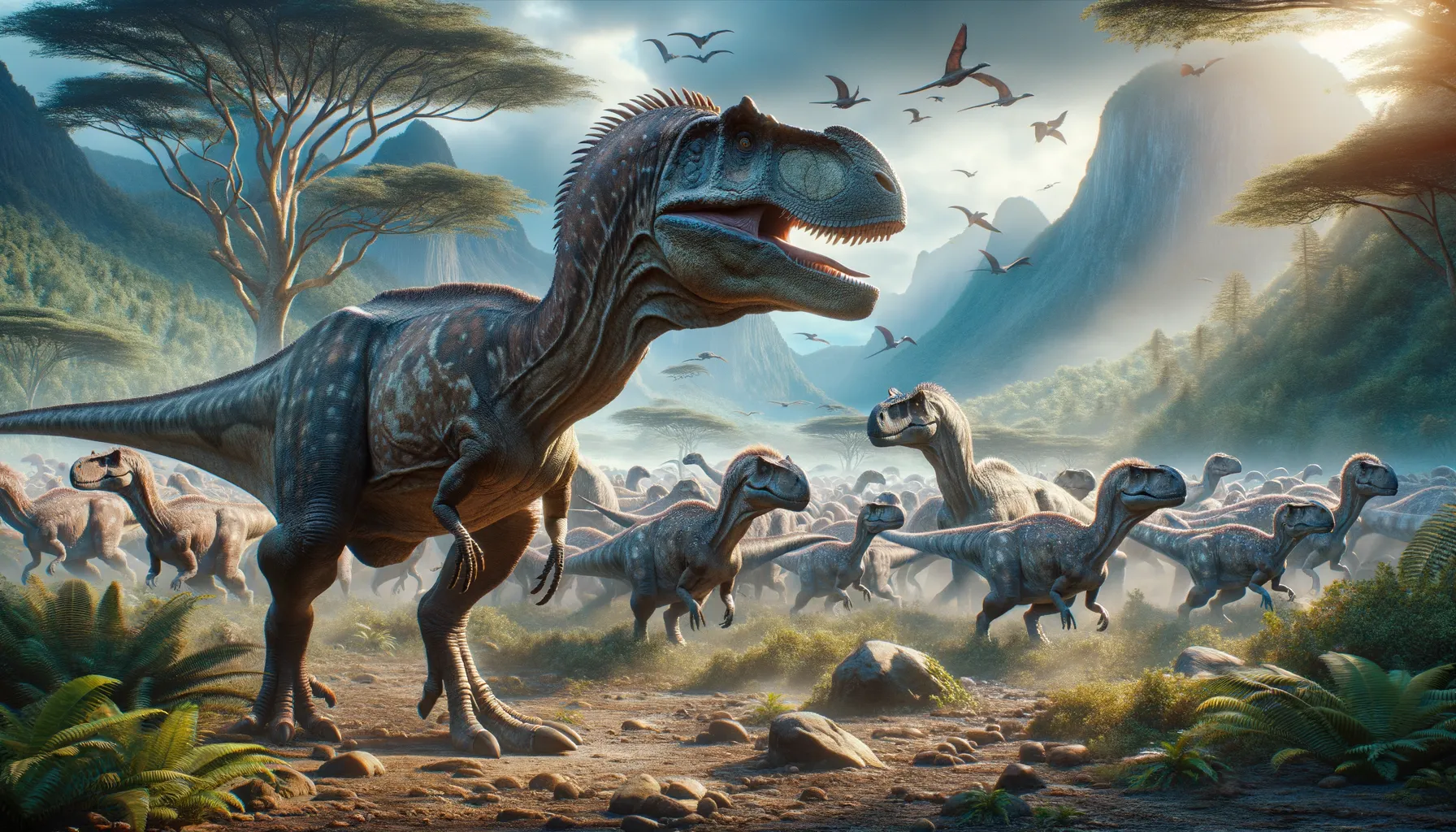
Blasisaurus
Duck-billed wanderer of ancient lands.
Period
Cretaceous
Length
About 7 meters long.
Height
Around 2.5 meters tall.
Weight
Approximately 1500 kilograms.
Blasisaurus was a medium-sized herbivorous dinosaur from the Late Cretaceous period. It belonged to the hadrosaurid family, often known as duck-billed dinosaurs. Blasisaurus is known from partial remains which suggest it had a robust body built for grazing. These dinosaurs roamed regions that are today part of Europe, exhibiting behaviors typical of herd creatures. Its discovery adds valuable insights into the diversity and distribution of hadrosaurs.
Diet
As a herbivore, Blasisaurus primarily fed on a variety of plant materials. It likely consumed leaves, twigs, and other vegetation that flourished in its habitat during the Late Cretaceous period.
Hunting
Blasisaurus did not hunt as it was a plant-eating dinosaur. Its primary food gathering involved foraging among low-lying plants and possibly reaching for tree foliage.
Environmental challenges
Blasisaurus faced environmental challenges typical of the Late Cretaceous era, such as fluctuating climates and volcanic activity. These dinosaurs needed to adapt to changes in plant availability and possible habitat disruptions. Predators were also a constant threat, requiring Blasisaurus to live in herds for protection. Additionally, competition for resources with other herbivorous dinosaurs might have been significant.
Speed
Relatively slow-moving.
Lifespan
Estimated to live several decades.
First discovery
Discovered in the Arén Formation, Spain.
Fun Facts
- Blasisaurus is known from the Late Cretaceous period, which means it lived more than 70 million years ago.
- This dinosaur was discovered in Spain and is named after a local region called La Blasi.
- Blasisaurus is categorized as a hadrosaur, commonly referred to as duck-billed dinosaurs because of their flat snouts.
- It was a herbivore, feeding on the plant life prevalent during its time.
- The fossil remains of Blasisaurus include partial skulls, giving us clues about its appearance and diet.
- Unlike some of its relatives, Blasisaurus was likely smaller, making it more agile to escape predators.
- Blasisaurus provides valuable insights into the diversity of duck-billed dinosaurs in Europe.
Growth and Development
Blasisaurus, like other hadrosaurs, hatched from eggs and underwent significant growth from juvenile to adult. Growth rates were likely rapid to reach a size that deterred predators. It is believed that they followed a typical dinosaurian pattern, with growth surges during the early years followed by a slower rate as they matured. The details of their developmental stages are still under study, giving insights into their life history.
Habitat
Blasisaurus inhabited Europe, with fossil evidence found in what is now Spain. The terrain during the Late Cretaceous was varied, with access to abundant water sources like rivers and lakes. Forested areas and open plains provided ample food and shelter. The climate was warm, supporting diverse plant life that these dinosaurs grazed upon.
Interaction with other species
Blasisaurus likely shared its ecosystem with other herbivorous dinosaurs, leading to competition for plant resources. Predatory species would have posed a threat, promoting social behaviors such as herd living for protection. Symbiotic interactions with insect species may have occurred, assisting with seed dispersal and plant growth. It likely engaged in minimal aggressive interactions but maintained awareness of its surroundings.
Natural lifespan
Blasisaurus had a natural lifespan of several decades.
Reproduction
Blasisaurus, like other dinosaurs, reproduced by laying eggs. Nests were likely built in communal areas, and parental care may have included guarding the eggs. Hatchlings emerged independently but possibly remained within the herd for protection. Breeding behaviors would have been seasonally influenced, aligning with environmental cycles for optimal offspring development.
Social behaviour
Blasisaurus exhibited social behavior by living in herds, providing safety from predators. Such behavior allowed for effective resource location and rearing of young. Communication likely involved vocalizations, movements, and possibly visual displays. Herd structures provided stability and organization, mitigating risks from environmental challenges and predatory threats.
Fossil locations
Fossil remains of Blasisaurus have primarily been found in Spain. These discoveries are significant for understanding the distribution of hadrosaurids in Europe during the Late Cretaceous period. The fossils provide insights into the paleoecological conditions and contribute to the broader knowledge of dinosaur evolution. Further excavations continue to explore the extent of its range in ancient ecosystems.
